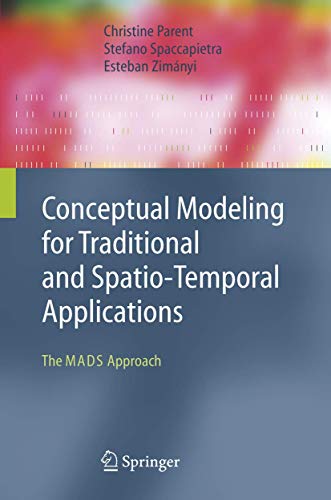Rubrique : Données / Modélisation
From environmental management to land planning and geo-marketing, the number of ap-pli-ca-tion domains that may benefit from using data enriched with spatio-temporal features is expanding very rapidly. Unfortunately, development of new spatio-temporal applications is hampered by the lack of conceptual design methods suited to cope with the additional comp-lexity of spatio-temporal data, which is obviously due to the particular semantics of space and time, but also to the need for multiple represen-ta-tions of the same reality to address the diversity of requirements from highly heteroge-neous user communities. Conceptual design methods are also needed to facilitate the ex-change and reuse of existing data sets, a must in geographical data management due to the high col-lection costs of the data. Yet, current practice in areas like geographical in-formation sys-tems or moving objects databases does not in-clude conceptual design meth-ods very well, if at all. This book shows that a con-cep-tual design approach for spatio-temporal databases is both feasible and easy to ap-pre-hend. While providing a firm basis through extensive dis-cussion of traditional data mo-deling concepts, the major focus of the book is on modeling spatial and tem-poral infor-mation. Parent et al. provide a detailed and com-p-rehensive des-cription of an approach that fills the gap between application conceptual requirements and system capabilities, covering both data modeling and data mani-pulation features. The ideas presented summarize several years of research on the cha-racteristics and des-cription of space, time, and perception. In addition to the authors' own data mo-de-ling approach, MADS, the book also surveys alternative data models and approaches (from industry and aca-de-mia) that target support of spatio-temporal mo-deling. The reader will acquire intimate knowledge of both the traditional and innovative features that form a consistent data modeling approach. Visual notations and examples are employed ex-tensively to illus-trate the use of the various constructs. Therefore, this book is of major importance and interest to advanced professionals, researchers, and graduate or post-graduate students in the areas of spatio-temporal databases and geographical in-for-ma-tion systems.
Année : 2006
Editeur : Springer Verlag


